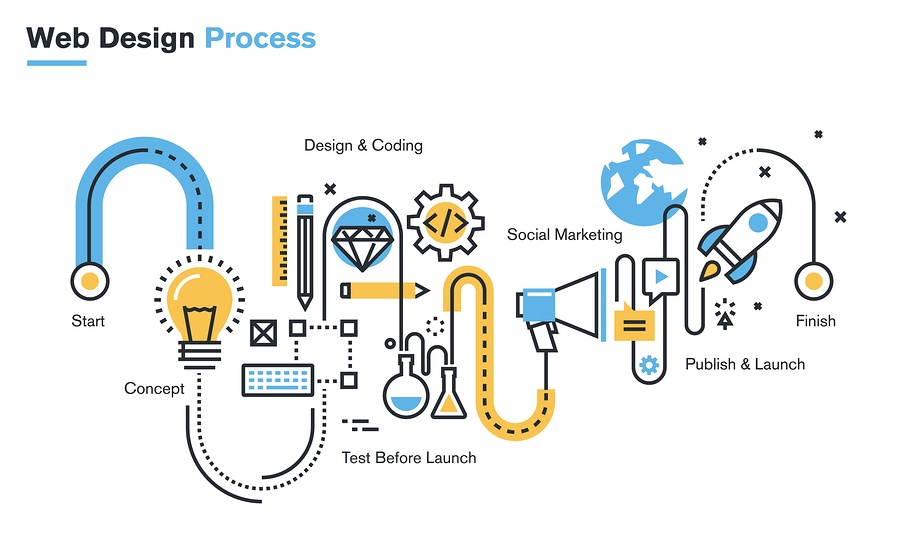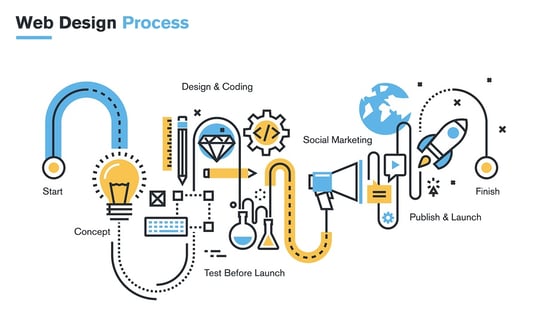How to Build a Powerful Credit Union or Bank Website


Don't Miss An Episode, Subscribe Now
Today we have another guest blog from IMPACT Branding & Design, from Partner & Chief of Strategy, Tom DiScipio.  He breaks down how to better design your Credit Union website! Enjoy!
He breaks down how to better design your Credit Union website! Enjoy!
Even across many industries, professional service websites (i.e. law offices, doctors, etc.) typically have the same architecture, design, and messaging.
We encounter a lot of sites like these on Website Throwdown. They all look the same, sound the same, make the same mistakes, and usually we end up giving the same advice.
If you’re reading this, your organization is likely in one of these industries with a cookie cutter website of what is being said and shown by the other players in your space, but guess what? For the most part, that’s OK.
Prospects who are looking for a company like yours will expect to see the same types of services on your website as well as your competitors.
In fact, if they don’t, they may actually consider leaving you out of the vetting process altogether. But while it’s good to fit in, it’s also important to stand out if you’re going to win business over others.
You to differentiate yourself in a way that extends beyond industry standards or services.
The key differentiation of a professional service comes down to HOW you display and explain your services, but before we get into that, remember these rules when it comes to your overall website content:
- Try eliminating the word, “we” and replace it with “you,” “your,” or “our clients.” Content that is prospect focused versus self-promotional will resonate on a much deeper level. It will direct your message towards your reader rather than to yourself.
- Cut your page content in half --- then cut it in half again. People don’t like to read so you want to deliver your message as quickly as possible and make the content you do have as easy to skim as possible. Use large, bold headers, sub headers, short paragraphs, and bullets. All of these elements allow your prospects to consume your content more quickly.
- Avoid the use of jargon. Most of your competitors believe that by using jargon, they will appear more “professional” and “established.” The truth is that prospects will interpret buzzword content as you talking AT them, versus talking TO them.
How to Differentiate Your Professional Services Through Culture
With many things being equal in the professional service industry, it can be a challenge to find the one thing that creates separation between yourself and your competition. Perhaps the most effective way to escape the noise is by leading with culture.
“Organizational culture is a system of shared assumptions, values, and beliefs, which governs how people behave in organizations. These shared values have a strong influence on the people in the organization and dictate how they dress, act, and perform their jobs.” - Study.com
Culture can be an incredibly influential factor in the decision-making process and as a result, your website should open the doors to it to help prospects understand, relate, and buy into it.
 A website that exudes a strong sense of culture should have the following elements:
A website that exudes a strong sense of culture should have the following elements:
-
An “About Us” page that tells an engaging story: This means that you’ve spent as much or even more time crafting the content for this page with a goal of getting your prospects to empathize with your journey. This can be conveyed through timeline graphics, pictures of your old office, quotes from team members, and more.
-
Your mission, vision, purpose, and core values: Tell your prospects why you get up in the morning, why your organization exists, and what your employees and leadership believe that can accomplish.
-
Photos of your team: Yes, individual bio pictures are great, but show that your organization knows how to work hard and play hard as a collective unit.
-
Always be hiring (even if you’re not): Your clients want to do the same thing you do - grow their business. A strong sign of growth is having calls-to-action that lead to a stellar careers page with active job listings.
-
Showcase Social Responsibility: It’s not all about the bottom line. Many people like to associate themselves with others that give back generously.
-
Link to your social networks: If you don’t have a spot on your website, facebook can be a fantastic medium to post updates, pictures, and events.
Remember that your customers on the other end of the computer or the phone, are real people, just like us, that have their OWN assumptions, values and beliefs.
Connect with them on a cultural level, and you’ve won.
DOWNLOAD NOW: 12 Decisive Steps to Grow Your Financial Institution
Culture aside, below are 7 key elements that should also be included on a powerful professional services website.
7 Elements of a Powerful Professional Services Website
1. Use Social Proof in Context, Not in Silos
The age of standalone “testimonials” and “accreditations & awards” pages are no more!
Insert relevant testimonial snippets directly into your service pages so prospects can clearly visualize the results of your services. Implement those awards and accreditation logos within global page elements like your header and footer to ensure their visibility on every page within the site.
Finally, if you’re using Wordpress or a similar CMS, consider using a plugin that allows you to gather starred reviews.
Leverage those reviews within a testimonial slider on your homepage, or even as a trust-builder element on your landing pages to boost conversions and built trust.
2. Earn Trust Early-On Through Education
Prospects are on your site because they’re trying to educate themselves on a challenge they’re facing.
If your website only goes as far as explaining the services you offer, you may have missed the opportunity to build trust with a buyer in the awareness stage of their journey.
This is when they have yet to give a name to their problem or challenge and are searching for educational material to help them.
Develop that initial trust by creating remarkably helpful content in the form of blog articles, eBooks, guides, checklists, tools, and more. Learn more about how and why you can start blogging for business here.
Much like social proof, your content offers should be in the context of what your prospects are already reading.
For example, if you’re a Business CPA and you have a page dedicated to tax services, link to a content offer that’s relevant to what the prospect has just read (i.e. “Free eBook: 10 New Tax Laws for 2016 that Every Business Owner Should Know.”)
To read the complete article visit the IMPACT blog.
You might also enjoy our blog on How to Tell Your Credit Union Member Stories.




Blog comments